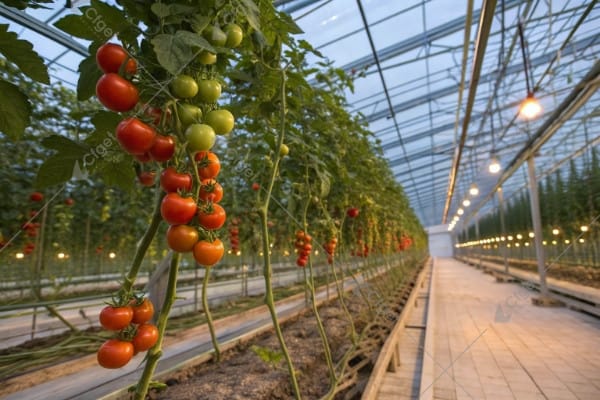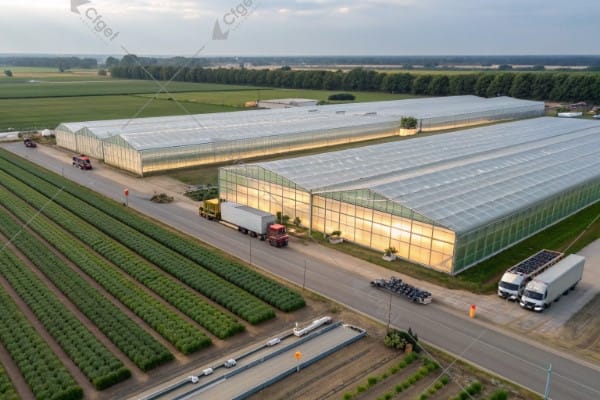Choosing the wrong glass thickness for your greenhouse can lead to structural failure, energy loss, and crop damage. Many growers struggle with balancing cost, safety, and performance when selecting glass specifications.
Greenhouse glass thickness typically ranges from 4mm to 10mm, with 4-5mm tempered glass being standard for basic structures, while premium greenhouses use 6-8mm insulated or laminated glass for better insulation and safety performance.
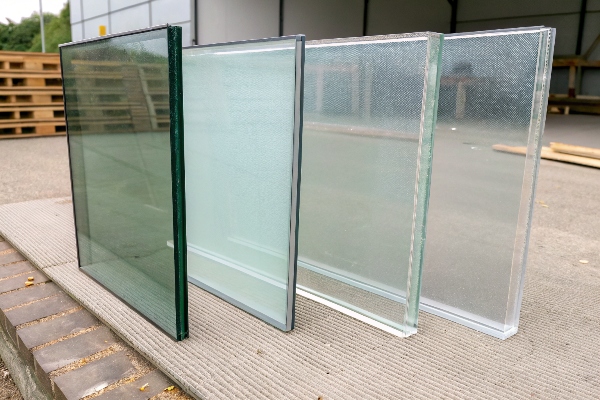
After 29 years in the greenhouse industry, I’ve seen countless growers make costly mistakes with glass selection. The thickness you choose affects everything from energy costs to structural integrity. Let me share what I’ve learned about making the right choice for your specific needs.
Don’t Miss:——Commercial Greenhouse Materials Showdown: Polycarbonate vs Glass – Which Covering Will Maximize Your 2025 ROI?
You might like:——What is a Smart Greenhouse? The Ultimate Guide to Automated Growing
What Thickness Is Generally Used for Greenhouse Roof Glass?
Your roof glass bears the heaviest loads and faces the harshest weather conditions. Most growers underestimate how much stress their roof glass actually endures throughout the seasons.
Standard greenhouse roof glass ranges from 4mm to 6mm tempered glass, with 4mm being suitable for small structures and 6mm recommended for commercial greenhouses over 1000 square meters or in high-wind areas.
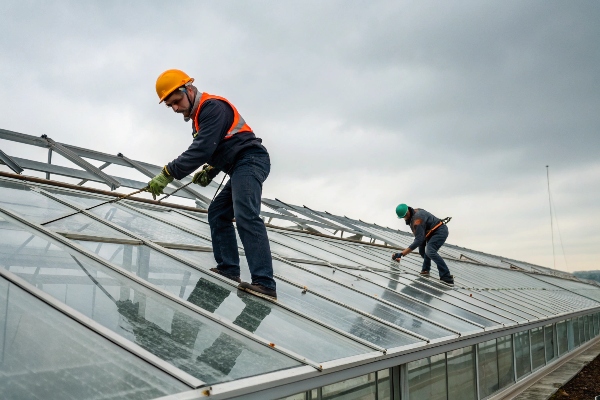
In my experience working with clients across Southeast Asia, Europe, and Central Asia, roof glass selection depends heavily on your local climate conditions. When I first started in this industry back in 1996, we primarily used 4mm single-layer tempered glass for most greenhouse roofs. This worked well for basic protection, but as cultivation techniques advanced, we discovered significant limitations.
The shift toward more sophisticated growing methods, especially for high-value crops like flowers and vegetables, changed everything. Today, I recommend diffuse reflection tempered glass for most roof applications. This specialized glass provides the same structural strength as standard tempered glass but offers superior light distribution inside the greenhouse. The diffuse coating scatters direct sunlight, creating softer, more uniform lighting that eliminates harsh shadows and reduces plant stress.
For regions with extreme weather conditions, such as Central Asia where temperatures can swing dramatically, I often suggest 6mm diffuse reflection glass. The extra thickness provides better structural integrity during severe weather events. I remember working with a client in Kazakhstan who initially chose 4mm glass to save costs. After experiencing damage during a severe hailstorm, they upgraded to 6mm glass and haven’t had issues since.
The manufacturing process for roof glass requires special attention to edge treatment and tempering quality. Poor edge finishing can create stress concentration points that lead to spontaneous breakage. I always recommend working with manufacturers who follow strict quality control standards and provide proper certification for their tempering processes.
What Is the Recommended Thickness for Greenhouse Side Wall Glass?
Side wall glass faces different challenges than roof glass. Wind loads, thermal expansion, and human contact all influence the thickness requirements for your greenhouse walls.
Greenhouse side walls typically use 5mm to 8mm glass, with insulated glass units (IGUs) becoming the preferred choice for energy efficiency, featuring two 4mm or 5mm panes with air or argon gas filling.
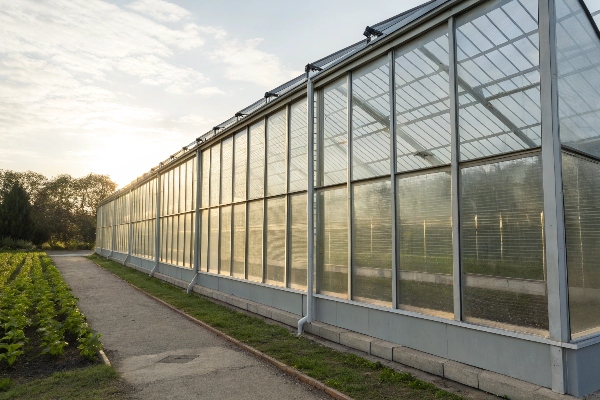
The evolution of side wall glass technology has been remarkable during my career. Early greenhouse designs used single-layer glass similar to roof applications. However, as energy costs increased and growers demanded better climate control, insulated glass units became essential for serious agricultural operations.
Insulated glass units consist of two glass panes separated by a spacer filled with air or inert gas. For greenhouse applications, I typically recommend 5mm + 12mm air gap + 5mm configurations. This provides excellent thermal insulation while maintaining structural strength. The air gap acts as a thermal barrier, significantly reducing heat transfer between the interior and exterior environments.
For premium installations, especially in European markets where energy efficiency standards are strict, laminated insulated glass offers the ultimate performance. This combines the thermal benefits of insulated glass with the safety advantages of laminated construction. If one pane breaks, the laminated layer holds the fragments together, preventing injury and maintaining some weather protection.
In tropical climates like Southeast Asia, where humidity control is crucial, I often recommend easy-clean glass for side walls. The special coating reduces maintenance requirements and helps prevent algae growth that can block light transmission. One client in Thailand told me their maintenance costs dropped by 40% after switching to easy-clean glass on their side walls.
The installation method significantly affects side wall glass performance. Proper sealing and thermal bridge management are critical. I’ve seen many installations fail because contractors didn’t understand the importance of continuous sealing around the glass perimeter. Even the best glass won’t perform if installation quality is poor.
Is Glass Thickness Related to Greenhouse Structural Safety?
Glass thickness directly impacts your greenhouse’s ability to withstand wind loads, snow loads, and thermal stress. Understanding these relationships helps you make informed decisions about structural safety versus cost considerations.
Glass thickness significantly affects structural safety, with thicker glass providing higher load-bearing capacity, better resistance to thermal shock, and improved safety during breakage, making it essential for large-span greenhouses and extreme climate conditions.
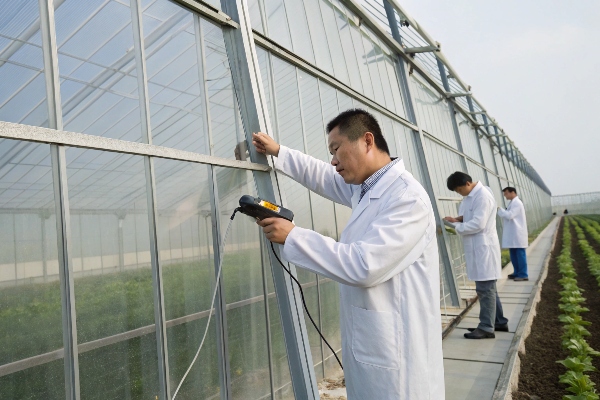
Structural safety calculations for greenhouse glass involve complex engineering principles, but the basic relationship is straightforward: thicker glass can handle higher loads before failure. The relationship isn’t linear, though. Doubling glass thickness doesn’t double its load capacity because other factors like edge support and thermal stress also play crucial roles.
Wind load calculations vary significantly by geographic location. In my work across different continents, I’ve learned that local building codes often underestimate the actual forces greenhouse glass experiences. Standard building codes assume vertical walls, but greenhouse glass is typically installed at angles that can increase wind loads by 20-30% compared to vertical installations.
Snow load considerations are particularly important for roof glass. I worked with a client in northern Europe who experienced a greenhouse collapse during an unusually heavy snowfall. The 4mm glass they had chosen met local building codes for vertical applications but couldn’t handle the combined snow load and wind uplift forces on the sloped roof. After reconstruction with 6mm glass and improved structural support, they’ve had no further issues.
Thermal stress is often overlooked but can be devastating. Glass expands and contracts with temperature changes, creating stress at mounting points and edges. Thicker glass has more thermal mass, which can actually increase thermal stress in some situations. However, tempered glass handles thermal stress much better than annealed glass, regardless of thickness.
The safety aspect of glass thickness becomes critical during failure events. Tempered glass breaks into small, relatively harmless pieces, but thicker tempered glass creates more fragments. For this reason, some applications benefit from laminated glass, which holds fragments together even after breakage. I always recommend laminated glass for areas where people work regularly, regardless of thickness.
Quality control during manufacturing affects safety more than thickness alone. I’ve seen 3mm high-quality tempered glass outperform 6mm poorly manufactured glass in structural tests. Always verify that your glass supplier provides proper certification and follows recognized manufacturing standards.
How Does Budget Affect the Choice of Greenhouse Glass Thickness?
Budget constraints often force difficult decisions about glass thickness, but understanding the long-term cost implications helps you make choices that balance initial investment with operational efficiency and replacement costs.
Budget considerations should include initial glass cost, installation expenses, energy efficiency impacts, and replacement frequency, with thicker, higher-quality glass often providing better long-term value despite higher upfront costs.
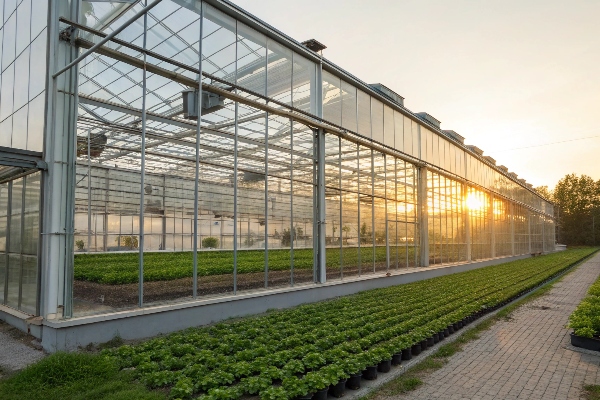
The relationship between glass thickness and total project cost is more complex than simple material pricing. Thicker glass costs more per square meter, but it also affects structural requirements, installation methods, and long-term operating costs. I’ve helped many clients analyze these trade-offs over the years.
Material costs typically increase exponentially with thickness. Moving from 4mm to 5mm glass might increase costs by 15-20%, while jumping to 8mm glass can double the material cost. However, the structural benefits often justify the additional expense for commercial operations. I remember working with a flower grower in the Netherlands who initially chose 4mm glass to minimize costs. Within two years, they had to replace several panels due to breakage, and the total cost exceeded what they would have paid for 6mm glass initially.
Installation costs also vary with glass thickness. Thicker glass requires more robust handling equipment and more skilled installers. The weight difference between 4mm and 6mm glass affects crane requirements and labor costs. However, thicker glass often installs faster because it’s less prone to damage during handling, reducing replacement and rework costs.
Energy efficiency impacts provide the most significant long-term cost differences. Single-layer glass, regardless of thickness, has poor insulation properties compared to insulated glass units. The energy savings from upgrading to insulated glass can pay for the additional cost within 2-3 years in most climates. I worked with a tomato grower in Canada who reduced heating costs by 35% after upgrading from 5mm single-layer to 4mm+4mm insulated glass.
Financing options can help manage budget constraints while achieving optimal glass specifications. Many suppliers offer payment plans or leasing arrangements that spread costs over time. The improved crop yields and reduced operating costs from better glass often generate enough additional revenue to cover financing costs.
Regional cost variations significantly affect glass selection decisions. In Southeast Asia, where labor costs are lower but material costs are higher due to import duties, I often recommend thicker single-layer glass over insulated units. In Europe, where energy costs are high but materials are readily available, insulated glass units provide better value despite higher initial costs.
Maintenance and replacement costs should factor into budget calculations. Thicker glass lasts longer and requires less frequent replacement. I’ve tracked performance data from installations across different climates, and 6mm tempered glass typically lasts 50-70% longer than 4mm glass in similar conditions. The reduced maintenance and replacement costs often offset the higher initial investment.
Conclusion
Selecting the right greenhouse glass thickness requires balancing structural safety, energy efficiency, and budget constraints based on your specific growing conditions and long-term goals.

